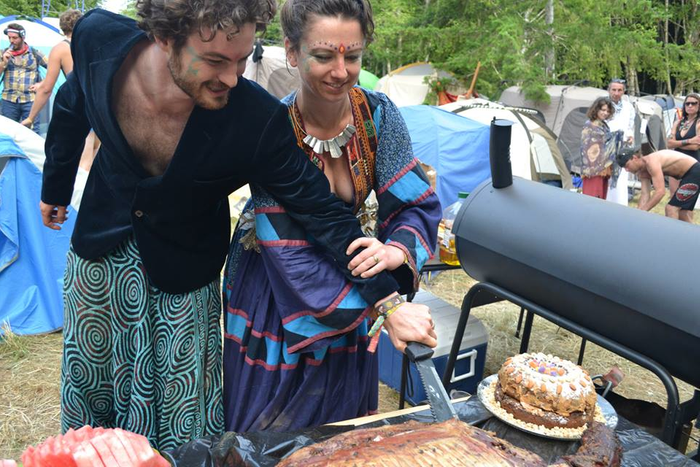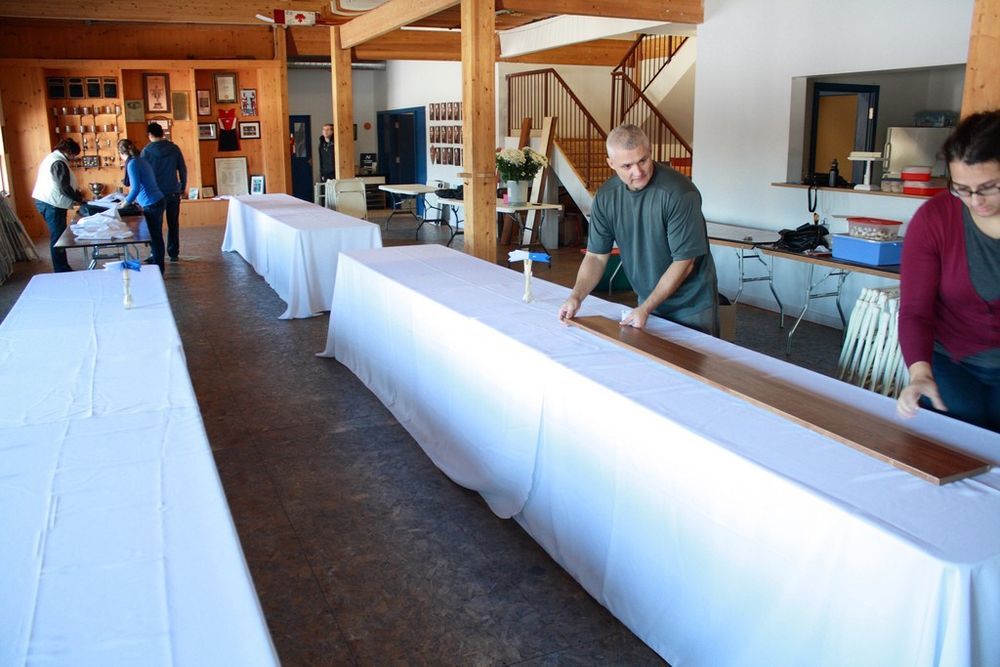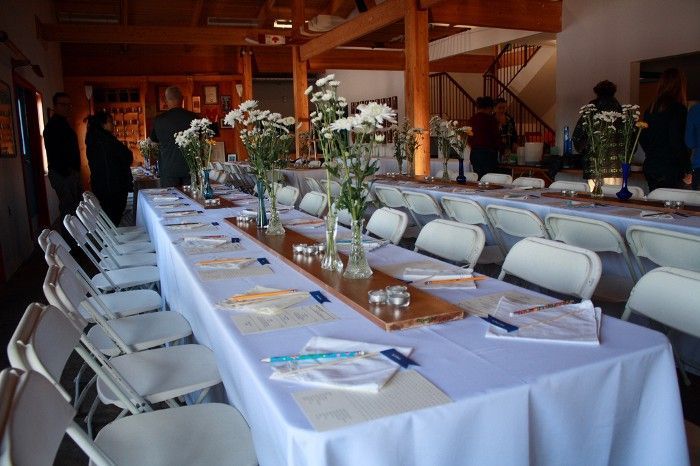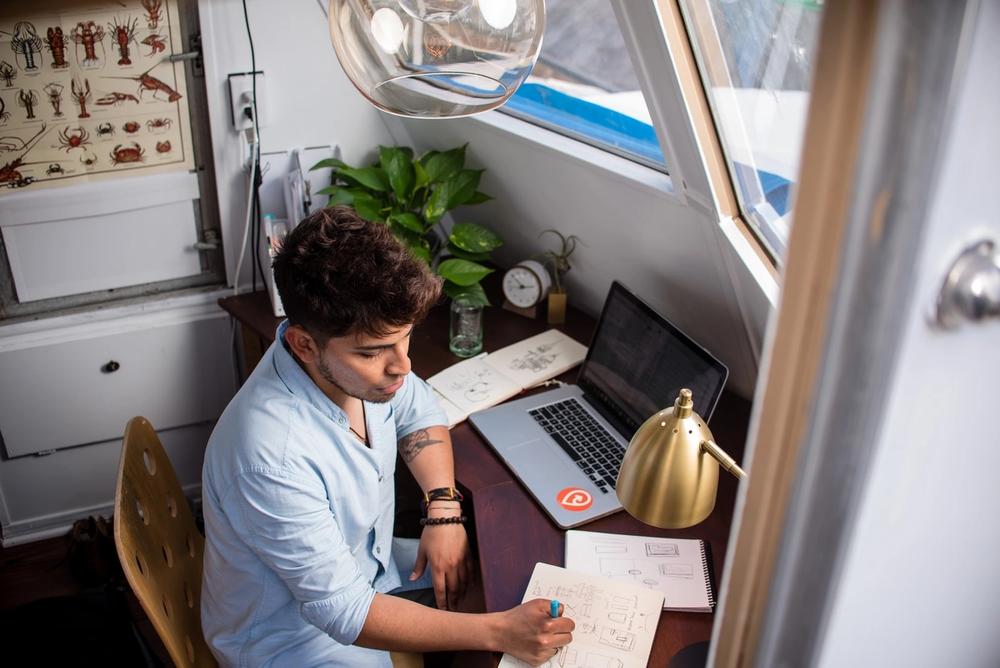In the summer of 2014, as one after another of my 30- and 40-something friends decided it was finally time, I found myself invited to four very different weddings. One was a 30 minute City Hall ceremony in New York City, followed by a casual lunch. Another took place during an outdoor gathering of Burning Man enthusiasts on the Oregon coast, and included a smoked lamb feast and a silent disco. Another was held in the groom’s parents’ backyard, and had all the trappings of a classic American small town wedding—except that the best man was a woman in a tuxedo. In fact, of all the weddings I’ve attended over the past few years, not one was purely “conventional.”

In one way or another, each wedding had been redesigned to actively challenge basic assumptions about formality, attire, activities or vows, often at the cost of great effort and frustration.
From a designer’s perspective, this is a good indication that the American wedding is a service experience that’s failed to adapt to the needs of its audience.
The convention of marriage already faces challenges in the US: not from external forces, but from shifting perspectives among marriage-aged Americans. According to a 2010 Pew Research study, only 51% of US adults are married today, down from 72% in 1960. Yet despite this decline, young adults still value social rituals—especially those, like marriage, that reinforce and celebrate personal relationships. For today’s increasingly mobile, career-minded, urban couples, finding a partner with whom they can build a life is still a powerful experience, and the ensuing union is well worth celebrating. The traditional family-directed church wedding, though, makes assumptions about social and economic circumstances that are often no longer true.
Approaching this as a service design problem means examining the entire journey taken by the “customer” (in this case, the couple and their guests), identifying failings or friction points, and looking to parallel services for ways to improve.
Here are a few ways we could save the modern wedding:
All of them draw on familiar, existing activities from other fields, and have broader implications for the design of social rituals — especially those that bring together large, diverse groups of people.
Crowdsource the party
For many couples, the best part of the wedding is that the maddening preparation is over. They must contend with the logistics that have always made weddings such a chore—seating, feeding, entertaining and accommodating dozens or hundreds of people—plus the fact that our communities today are more widespread than ever, both in location and in social norms. Today, it’s not unusual to have friends and family scattered across the planet, from conservative, meat-and-potatoes rural grandparents to a vegan photographer cousin who lives in Berlin.
For most of us, this is a once (maybe twice) in a lifetime event, that we quickly learn to plan and execute, then forget. How might engaged couples benefit from the knowledge of friends and family who’ve already gone through it?
Crowdsourcing is already a powerful tool for channeling a community’s resources and experience to help small groups with specific needs. What if there was a Yelp-like digital service to help couples choose venues and wedding-related services? What if an entire wedding could be crowdsourced, with a platform that invites guests to contribute time, money or resources to make it happen?
This could be broader than just turning the reception dinner into a potluck. A well-designed, wedding-specific organizational platform could ensure that no detail is overlooked, help assign tasks to those able to complete them, and ultimately result in a ritual with real significance. For today’s cash-strapped but enthusiastically DIY young adults, a guest’s offering of food, music, logistical planning or plain old manual labor could bring far more meaning to the event than a gift-wrapped blender.
Turn the ceremony into a journey
Once upon a time, most of the family and friends who might attend our wedding lived in the same town. Today, they could be anywhere. When our social links depend more on email, Facebook and Skype chats than in-person visits, does a wedding ceremony that expects people to travel from all over the country (or world) still make sense?
Many couples already hold multiple wedding celebrations in multiple cities, to better accommodate their far-flung communities; what if this was formalized? Imagine replacing the wedding ceremony with a “wedding trip” that has the couple traveling like a rock band on tour.
Use technology to bridge the distance
Given their mobility and technical savvy, it’s no surprise that many young couples have tried using video chat technology to include distant friends and family in their wedding ceremonies — but the results are often disappointing. Issues of bandwidth, resolution, layout and sound quality are already issues with live video chat; combine these with the normal pressure and confusion of a big wedding, and you have a recipe for anxiety and distraction.
While less immersive than attending the ceremony in person, this is could be an opportunity to share an experience with loved ones who might not otherwise be able to attend — or who might have felt obligated to, despite being unable to afford it, or uncomfortable traveling so far.
Provide more structured, non-verbal interaction
Perhaps you’ve attended a wedding where you knew nobody, as a favor to your partner, or even braved one alone. The short interactions and forced significance of the wedding event can sometimes make them as stressful as the after-party at a professional conference. How might we design a wedding that minimizes superficial talk, and replaces it with something more meaningful — even a chance at genuine connection?
“I would never go to a wedding alone. I tried it once, for an old college friend, but I barely knew anyone and spent the entire weekend having short, awkward conversations…”
What other activities might a multi-generational crowd be interested in learning together? Any sort of structured group dance could work, but so could learning a song together, or working together on a group garden or building project.
These solutions only deal with the wedding ceremony, of course, but a service design approach could potentially make the institution of marriage itself more responsive, and more resilient.
- What if couples had the option of taking marriage vows for a finite period of time, rather than exclusively for the rest of their lives?
- What if relationship coaching became an expected and welcome part of the engagement process, and regular check-ins with a couples counselor were as expected as visits to the doctor?
- What if we acknowledged that more than 50% of marriages eventually end, and took steps to invest the divorce process with meaning and ritual as well?
Individually, any one of these efforts could ease some of the anxiety that permeates modern marriage, and make it more relevant for today’s socially engaged but tradition-wary young couples. Taken together, though, they could start us down a road toward transformation. Social institutions like marriage have always evolved along with the needs of society — all they need today is a push, to help them transform as fast as our world is.



